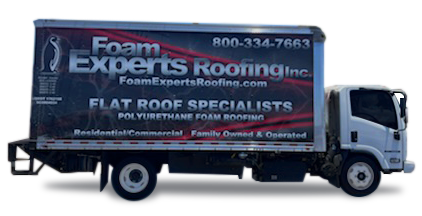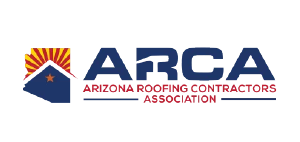Did you know that a well-maintained metal roof can last up to 70 years? Some can even withstand winds over 100 miles per hour. This makes metal roofing a great choice for many industrial needs. But not all roofing materials last as long.
When dealing with industrial roofing, it’s key to know how long different materials last. EPDM roofs last 10-15 years, while PVC roofs can last 15-30 years. Understanding these lifespans can save you from expensive replacements down the line.
Key Takeaways
- Metal roofs can last between 40 to 60 years, and with proper maintenance, they may reach up to 70 years.
- EPDM roofing material generally lasts between 10 to 15 years.
- Modified Bitumen roofing has a life expectancy of 10 to 20 years.
- PVC roofs come with a lifespan ranging from 15 to 30 years.
- Different roofing materials have varying lifespans, affecting the industrial roof replacement timeline.
Types of Industrial Roofing Materials and Their Lifespan
Industrial roofing materials come in many types, each with its own strengths and lifespan. They are made to handle tough weather and keep buildings safe and strong. Knowing what each material offers can help you choose the best one for your needs.
EPDM Roofing
EPDM roofing, also known as rubber roofing, is flexible and stands up well to sun and cold. It lasts 20 to 30 years with regular care. It’s a good choice because it’s affordable and keeps buildings cool, but it needs more upkeep than some materials.
Modified Bitumen
Modified bitumen roofs are tough and can handle a lot of foot traffic. They last 10 to 20 years. These roofs have many layers for strong protection, but putting them up is hard and takes time.
Build-Up Roofing
Build-up roofing (BUR) is made of layers of bitumen and fabric. It’s very strong and keeps water out. It lasts 15 to 20 years. While it’s hard to install, its durability makes it worth the effort.
PVC Roofing
PVC roofing is very strong and can handle chemicals and oils. It lasts 15 to 30 years because of its seams and material. Even though it costs more upfront, its long life and strength make it a good choice for buildings.
Factors Affecting the Lifespan of Industrial Roofs
Knowing what affects industrial roof longevity is key to making them last longer. Many things influence how well and long industrial roofs last.
Climate and Weather Conditions
The weather has a big impact on roofs. Extreme temperatures, heavy rain, and lots of sun can shorten a roof’s life. Places with a lot of sun and changing temperatures see roofs wear out faster.
Hail, strong winds, and snow also cause damage. This means roofs need to be fixed or replaced more often. Choosing the right materials is important to fight off these weather challenges.
Maintenance and Regular Inspections
Keeping up with roof maintenance is vital. Regular checks can catch small problems before they get big. Roofs should be checked yearly and after bad weather.
Tasks like cleaning off debris, checking drains, fixing leaks, and ensuring good airflow are important. These actions help roofs last longer by reducing damage.
Quality of Installation and Materials
The quality of roof installation and materials is critical. Using top-notch materials and skilled installers can make a roof last longer. Bad installation can lead to frequent repairs and a shorter life.
It’s important to use quality underlayment and proper installation methods. Also, picking materials that last is key to avoiding early failure.
How long do industrial roofs last?
Several factors influence the lifespan of industrial roofs. These include the materials used, how well it was installed, and the local weather. On average, industrial roofs can last from 10 to 50 years.
TPO (Thermoplastic Polyolefin) roofs usually last 22 to 30 years. EPDM (Ethylene Propylene Diene Monomer) roofs can last 22 to 35 years. Metal roofs, known for their strength, can last 30 to 45 years with proper care. Asphalt roofs typically last 20 to 40 years, depending on the shingle quality and roof slope.
BUR (Built-Up Roofing) and Modified Bitumen systems last 20 to 40 years and 20 to 30 years, respectively. PVC (Polyvinyl Chloride) roofs last 20 to 30 years with good maintenance. Green roofs can last 25 to 50 years, depending on the environment and care.
The lifespan of an industrial roof depends on more than just the material. Regular maintenance and quick repairs are key. Keeping up with inspections and fixing small issues can extend a roof’s life.
Weather and climate also affect a roof’s durability. Extreme weather can reduce a roof’s lifespan. This means roofs need more frequent inspections to catch problems early.
The choice of materials and maintenance practices greatly impact a roof’s durability. This highlights the need for careful planning and proactive care to maximize a roof’s lifespan.
Conclusion
Industrial roofing systems vary in lifespan, influenced by material quality, installation, and weather. TPO roofs last 15 to 20 years, while EPDM can reach 30 years with care. Green roofs and Built-Up Roofing (BUR) systems often last over 20 years.
Keeping roofs in good shape is key to their long life. Regular checks and quick fixes prevent big problems. Choosing top-notch materials and professional installers is also vital. Bad installation can lead to early failure, showing the need for skilled work.
Weather can affect roof lifespan, so roofs in harsh conditions need more care. Following maintenance best practices, like bi-annual checks, helps a lot. In short, a roof’s life depends on quality materials, careful installation, and ongoing upkeep.















